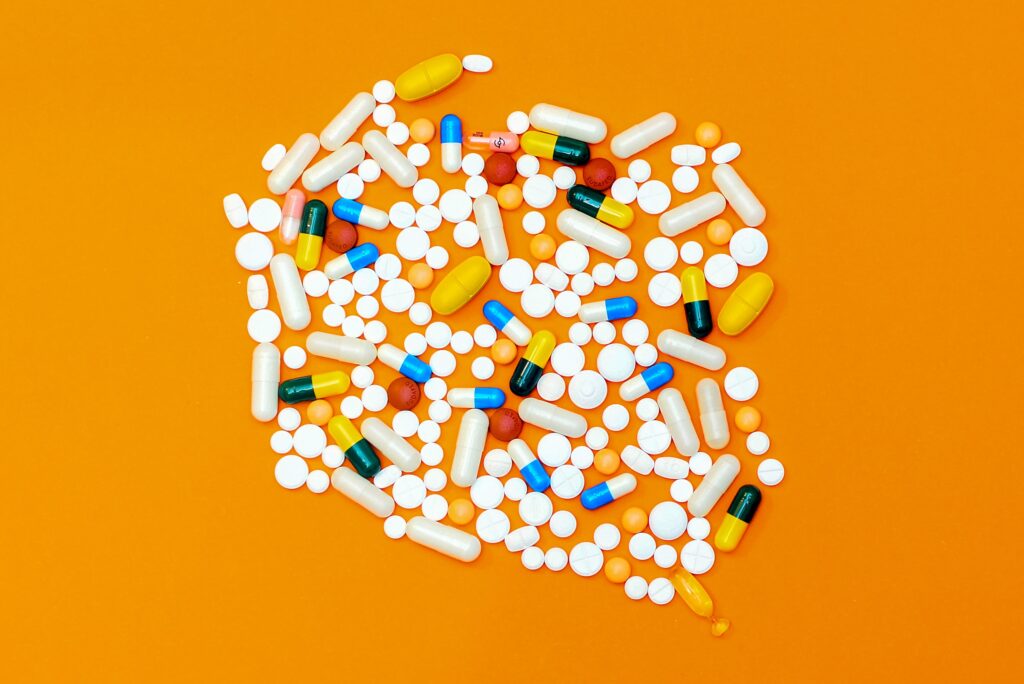Thickeners and Binders
For various reasons, it may be necessary to increase the viscosity of a formulation and a wide range of materials are available for this purpose. The choice is dependent partly on the reason for thickening and partly on the route of administration; occasionally, one must take into account also the possibility of incompatibility with the drugs and/or other excipients. One reason for thickening is to give an oral preparation a better “mouth-feel”, as in the case of linctuses which are normally thick and syrupy.
A more common reason is to increase the physical stability of suspensions or emulsions, and it is here that the greatest variety of thickeners are needed. Occasionally, a thickener is used to change a fluid into a paste or solid for convenience in administration, as shown by the use of gelatin in lamellae, suppositories and pessaries.
Some thickeners, particularly starches and gums, are also binding agents and may be used extensively for this purpose; others have alternative ancillary properties such as the ability to form films on drying. The majority are organic and may be natural, partly synthetic or entirely synthetic in origin; only a few are inorganic and these are insoluble in water.
Thickeners are normally non-toxic but only a limited number are suitable for injection. Those which are slow to swell or dissolve are commonly kept as ready-made mucilages (acacia, tragacanth, methylcellulose). Batchwise uniformity of thickening power is an important feature of control, particularly of natural products such as tragacanth and sodium alginate, hence the respective B.P. and B.P.C. tests for these substances and the B.P. “Jelly Strength” test for gelatin.
Some thickeners, such as agar, methylcellulose and psyllium, are used as “bulk” laxatives, either for treatment of constipation or following colostomy. Others, such as acacia and gelatin, have been administered intravenously to increase blood volume in treatment of shock but the use of acacia in this way has been abandoned due to risk of liver damage, and even gelatin can only be injected if of a high degree of purity and pyrogen-free.
Binding agents have adhesive properties which are useful in the preparation of pills, lozenges and tablets. The choice is largely dependent on the desired speed of subsequent disintegration; thus, acacia, having powerful adhesive properties and being slow to re-dissolve, is suitable for lozenges when a gradual solution in the mouth is required. Starch, on the other hand, binds less firmly but does not lead to slow disintegration. Thickeners can be classified according to their source as follows:
Organic
- Plant Products: Acacia, Tragacanth, Starch.
- Seaweed Extracts: Sodium alginate, Agar, Chondrus.
- Animal Protein: Gelatin.
- Synthetic or Semi-synthetic: Methylcellulose, Sodium carboxymethylcellulose, Polyvinyl alcohol.
Inorganic
Bentonite
Silica
Fats and Waxes
When correctly used, these terms refer to naturally occurring esters of long-chain acids, but in practice, they are applied to a greater variety of products, natural or synthetic, mainly on the basis of physical appearance and properties.
Fats are chemically similar to fixed oils in that they are glycerides, but they have a higher melting point due to their greater content of saturated acids such as stearic. Borderline cases, such as palm oil and coconut oil, maybe liquid in tropical countries and solid else-where, but the commoner fats of temperate countries are of animal origin.
Fats are harmless when taken by mouth or applied to the skin and some (e.g. coconut oil) have been injected as intravenous feeding emulsions. Their main use in pharmacy is, or has been, in ointment bases, particularly in those which are required to be absorbed through the skin. One vegetable fat (theobroma) is primarily used for insertion into body cavities.
They are normally incorporated in completely non-aqueous bases, and not as the disperse phase in emulsions. A drawback to some fats is their liability to go rancid on storage, hence the early development of preparations such as benzoated (or benzoinated) lard and suet.
Waxes differ from fats both chemically and physically. Chemically, they contain a wider variety of alcohols (including sterols) and acids, and are more stable, particularly to hydrolysis; physically, they have a higher melting point and several are able to form water-in-oil emulsions. They are used in ointment bases, either as “stiffeners” of fats and oils or as components of a water-in-oil emulsified base. Unlike fats, waxes are not foods and are only occasionally used as excipients in oral preparations.
Apart from the true waxes, several products, both natural and synthetic, have been given the same time, notably the paraffin waxes and the higher polyethylene glycols (“Carbowaxes”).
The main members of the group may thus be classified as follows :
- Vegetable Fats: Coconut Oil, Theobroma Oil B.P.
- Animal Fats: Lard B.P.C., Suet
- Animal Waxes: White Beeswax B.P., Spermaceti B.P.C., Wool Fat B.P.
- Miscellaneous:
- “Fat” consistency: Soft Paraffin B.P.
- “Wax” consistency: Wool AlcoholsL B.P., Self-Emulsifying Monostearin B.P.C., Hard Macrogol B.P.G., Soft Paraffin B.P., Hard Paraffin B.P.
Flavors
Flavoring has its proper place in pharmacy and medicine; it is advantageous if used rationally but potentially dangerous if overdone. Most drugs, unless highly insoluble in water, have an unpleasant taste: either intensely bitter (quinine, chloroquine), astringent (iron), saline (ammonium chloride) or sour (various acids).
This may be tolerated by the average adult but maybe a real problem in medicines given frequently to young children. Even with adults, there may be serious objections if the drug must:
(a) be taken in large amounts over a long period,
(b) be retained in the mouth (lozenges),
(c) be taken under circumstances where it is difficult or inconvenient to get rid of the after-taste (e.g. during travel).
There has thus developed a modern practice of flavoring medicines which is far more elaborate than the earlier use of syrups and aromatic waters and is, in effect, a separate skill distinct from the pharmacy. This is particularly true of manufactured medicines because the stability of flavors can be an extremely difficult problem requiring expert knowledge.
Historically, flavoring began with natural products such as orange, lemon, ginger, cinnamon, camphor, dill, caraway, anise, licorice, etc., some of which might be claimed to have a slight medicinal value (e.g. the “carminatives”). Many of these are still used, particularly if there is a long “tradition” for certain flavors, as in cough lozenges.
In other cases, they have been replaced by more sophisticated artificial flavors, especially if it is desired to introduce some degree of novelty. The dangers of flavoring do not lie in any harmful effect of the synthetic flavors themselves, since most have been developed for the food and drink industry; the risks are that either:
(a) children may accidentally take an overdose of the drug,
(b) adults may lose confidence in potent drugs because, superficially at least, they appear to be treated like confectionery.
These drawbacks did not apply to the earlier natural flavors which perhaps made the medicine palatable but could hardly be called attractive.
It has already been pointed out that a large number of vegetable “drugs” containing volatile oils of characteristic taste and aroma are chiefly of value on account of their flavoring properties. In addition to these, there is a small group of synthetic substances that are used primarily to mask the taste of drugs, and some of which are described in pharmacopoeial monographs:
Saccharin
Sodium Cyclamate
Sodium Acid Glutamate




